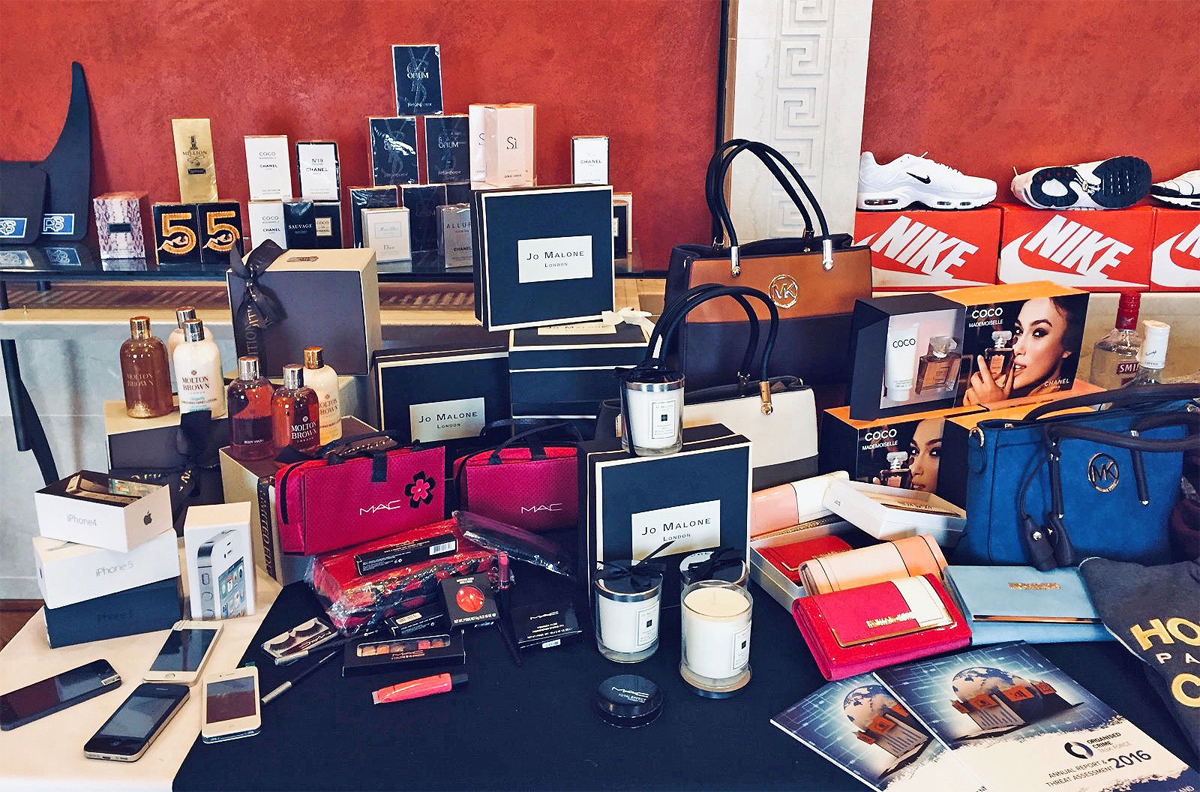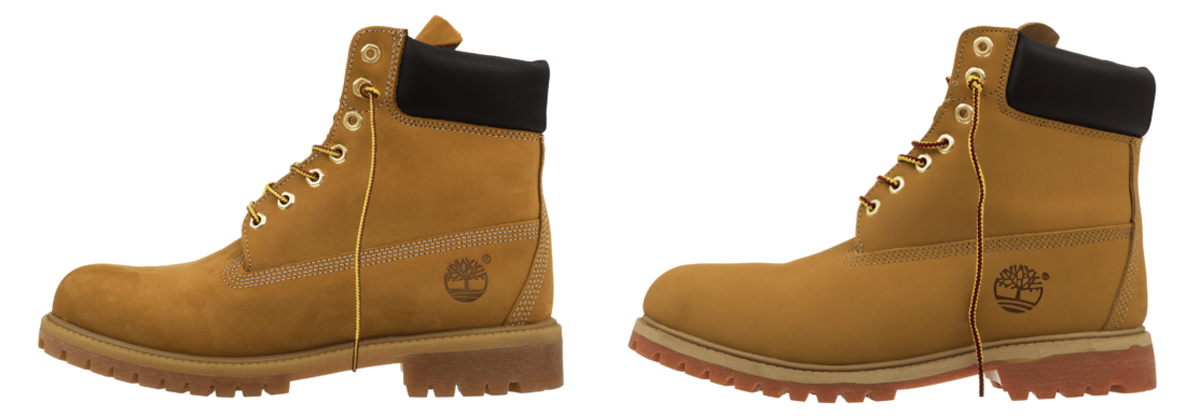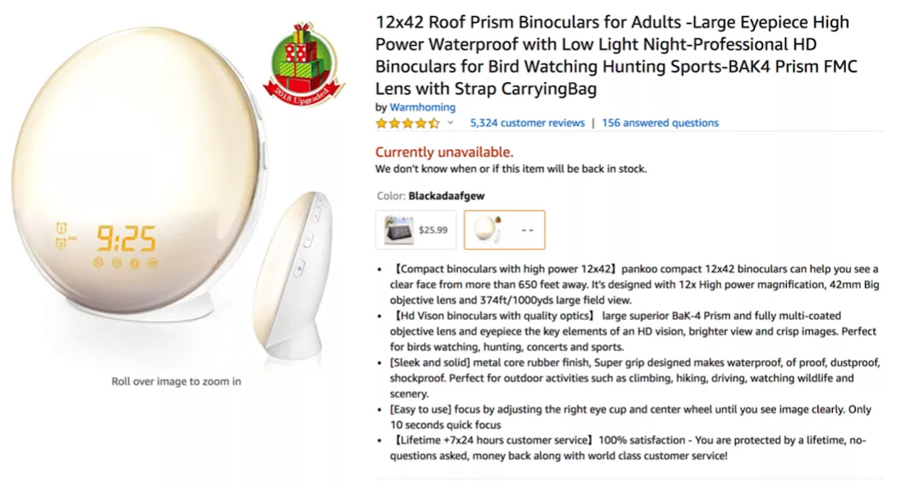
Each of these items is a fake. Everyone was bought on Amazon.
Every thirty products sold in the world are counterfeit. According to the Red Point user information analysis service, 32% of buyers are not sure that they took the original. It is expected that by 2022 fakes will be sold for $ 991 billion. And their total value will exceed $ 2.8 trillion. Business is very profitable, and hundreds of thousands of companies are involved in it.
Until recently, Amazon was considered a relatively safe haven. But that is starting to change. And the tricks that scammers come up with are quite curious.
The store now spends billions of dollars a year to combat counterfeit items. He has the most advanced data analysis systems with AI, which determine the seller of counterfeit goods by indirect signs - even before he makes his first purchase.
But if you sell several billion goods every year, and 2.5 million sellers work through you, it’s almost impossible to carefully check each one.
In early 2019, in order to somehow fight this, Amazon, as we said, launched Project Zero (“zero” - because the idea was to reduce the number of fakes to zero). The idea is logical: if you can’t do something yourself, get help from those who are also profitable. With the identification of fakes, brands began to help the store. Gucci or Hewlett-Packard are unprofitable for any condition that they try to bring some kind of nonsense under his name.
To help Amazon systems find counterfeit products, brands can upload their logos, product descriptions, product photos, and any other key information that can help identify stock fraud. Firms also send an online store a database with unique codes for each product they produce. When the product leaves the warehouse, this code will be scanned. If suddenly it is not found in the database (or a product with this code has already been purchased earlier), Amazon systems will be able to raise an alarm.

Currently, more than 200,000 brands have joined the program. And the system turned out to be quite effective. For example, in 2017, a case was described on Habré. Founder of No Starch Press drew attention to the problem of selling counterfeit books through Amazon. Unscrupulous businessmen scanned other people's books, printed their own circulations - and sold them through Amazon under the same SKU (stock keeping unit). So, the new system is struggling with this 100%. Dealers cannot copy the code of each product. And if they get punctured on at least one thing - write-gone, the system has detected you.
Thanks to existing security measures, the number of fakes on Amazon is almost two times lower than the market average (~ 2%, even in “risky” categories). Well, no one has canceled customer support. If the client discovers that the goods are counterfeit, the money is refunded to him, and the seller is removed from the platform. Even if you discovered a fake fact in a few years.
But despite all the systems introduced, the number of fakes on the site still does not decrease, but grows .
What's happening
Counterfeit creators craving easy money just don't give up. Most of them “work” from China and Brazil, and they are not afraid to go to jail for their activities. As soon as one page with fake goods is identified and erased, five to ten others are created in return for it. No matter how smart the algorithms are, people find it possible to exploit them.
Every year, Amazon now spends $ 400 million only on personnel who identify counterfeits in the sorting warehouses. More than 5,000 employees are currently doing this. The company's algorithms scan more than 5 billion pages in its catalog every day. For each fake identified by customers, the company proactively blocks 100-150. Amazon officials on allegations of counterfeit growth say that 99.9% of the time, users now get to a page that has been thoroughly tested.
But considering that the site gained 17.6 billion pageviews in October alone, the math, even according to Amazon, is disappointing. 17.6 million visitors per month of counterfeit goods - nothing to be proud of.

The former store top manager, in an interview with the Washington Post, said that after implementing Project Zero, the company still realized that it was losing, and no money injections would help the problem. Some fakes are too difficult to identify, and simply unprofitable. The electronic giant receives 15% of the value of the goods, regardless of whether it is counterfeit or not.
Active struggle against counterfeit inevitably offends some honest sellers. This slows down the number of offers in the store. Over the past six months, Amazon managed to feel this effect, and now decided to still actively add sellers without checking them too carefully. This will inevitably increase the number of fakes, but paying compensation to users who understand that they have been deceived is actually the cheapest and easiest option for the company. Losing growth, quarterly figures and stock prices is much more painful.
Hard to believe examples
Despite all the expensive Amazon algorithms designed to find fakes, customers can simply enter “YSL dupe” in the search field and find dozens of fake Yves Saint Laurent handbags. Completely copying and design, and even the logo. Similarly, counterfeiting on Louis Vuitton, Fendi and Gucci is on the site. Some of these products are so popular that they even get the Amazon's Choice badge. That is, the company actively recommends them to its customers.

Timberland original on the left, fake on the right
Moreover: some buyers even specifically go to Amazon for fakes! The quality of the item does not bother them, the main thing is to get the show off at a low price. In the reviews of such products, many customers rejoice that they were able to take a Devon watch that “none of my friends could distinguish from real ones”. Obviously, if all the fakes are removed, Amazon will not receive its percentage from such customers.
The problem in counterfeiting for the Internet giant is now exclusively reputational. Such publications like this one, the company would like to avoid. Top brands also do not like to see themselves in the extradition next to their own replicas (recently, for example, the store has lost cooperation with Nike because of this).
A lot of fakes (more than 4%) were found in the sections with contraceptives and cosmetics, which the audience was not very enthusiastic about. And the biggest scandal recently was in connection with fake children's food. They say that if this is not a brand, then giving children this is dangerous. Obviously, the creators of the counterfeit about the quality of their products are worried last.
But that is not all. Even Amazon’s own products have not escaped the unenviable fate.
The company has its own brands: Amazon Essentials, Amazon Basics, Amazon Elements, 206 Collective shoes ( if you remember ), and so on. The store actively promotes products from these series, they gain thousands of reviews, get first places in the issue and a high rating. And then, when production ends or a new model comes out, they forget about this product. And under his name, cunning businessmen soon offer their version. Which also receives part of the traffic.
And some Chinese went even further (there is already a real sur). Multiple companies can sell the same product on Amazon. This is standard practice (for example, AirPods has 17 of them). They have different prices and delivery conditions, but their own rating. And most importantly - all companies have access to the product description page. And if other sellers do not like the amendment, they, of course, have the opportunity to block it.
But an incident happens when a product is abandoned long ago. And there is no one to follow his edits. In this case, you can put in its place a completely different product - with its own pictures, description and even name. But with a high rating and a ton of reviews from the old product, as well as a very solid place in the search results. About a dozen such products have already been found (links to them will not work, since then Amazon has already deleted them).

Product Frankenstein. A binocular Chinese alarm clock parasitic on the former Amazon Basics HDMI cable page. Check out the chic color name
On certain pages there are restrictions in terms of who can make changes (for example, the same AirPods, where changes are available only to Apple). And such a rule, of course, works on pages of things from Amazon itself. But even they turned out to be “hacked”: in place of the former HDMI-cables and smart bulbs, we are offered Chinese knives, watches and vegetable cutters. Most likely, this was done through a support request. Sellers can write to Seller Support to resolve their issues. The employees there are tired, often not from America, and can fulfill the request without even understanding what is the matter. Especially if such requests are sent regularly from different accounts. And the profit in case of success turns out to be very substantial: ordinary (legal) companies pay millions to get into the top of the list .
This type of fraud was first noticed in the Marketplace Pulse, which tracks brands on Amazon. They saw that every week, five to ten “dead” products rose from oblivion in the form of completely different goods. And all of this is mainly from sellers from Shenzhen.
While other retailers would be able to track such phenomena, and quickly respond to attempts at such arrogant exploits, the truth is that Amazon is too big. All its processes are based on automation and systems. If this is not in their algorithms, this is not taken into account.
What is the way out then? In large Chinese stores the same thing. As buyers, we can only remember to look at the reviews and seller ratings. If the account was created a couple of weeks ago, and here the most profitable Nike sneakers, Micael Kors handbags or HP laptops are already on sale, there is reason to think a little.
When the price, even by Amazon’s standards, is very tempting, it’s definitely worth checking the latest reviews (do they relate to this particular product at all?). And do not take products for which there are no reviews yet. Do not be a guinea pig for future generations. Refunds through Amazon work even for buyers from Russia, this phenomenon sometimes happens with us, but there is nothing pleasant in the process, and the delay can be more than a month.
Well, there is only one guaranteed way to avoid fakes so far - to buy directly on the manufacturer’s website. Almost every one of them has a representative office in the USA. There are recent offers, and there are no third-party sellers.
